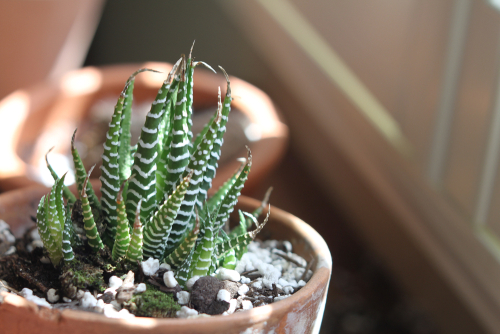Zebra succulents are a popular choice for plant enthusiasts due to their unique appearance and low maintenance requirements. However, it can be disheartening to see your zebra succulent turning brown.
While it is not uncommon for succulents to experience discoloration, it is important to understand the underlying causes to ensure your plant stays healthy.
Identifying the problem is the first step in addressing a zebra succulent turning brown. Brown leaves or leaf tips can be a sign of both natural and unnatural causes.
While some causes are harmless and can be easily remedied, others can be more serious and require immediate attention. Understanding the potential causes can help you pinpoint the issue and take the appropriate steps to restore your plant’s health.
Key Takeaways
- Zebra succulents can turn brown due to a variety of reasons, both natural and unnatural.
- Environmental factors, improper soil and watering, and pests or diseases can all contribute to discoloration.
- Proper care, including well-draining soil, appropriate watering, and regular monitoring for pests and diseases, can help prevent and address brown leaves.
Related posts:
Understanding Zebra Succulent
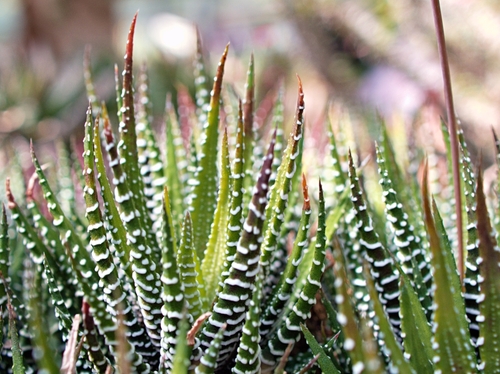
Zebra Plant
The Zebra Plant, also known as Haworthia Fasciata, is a small, slow-growing succulent that is native to South Africa. It is a popular houseplant due to its unique appearance and ease of care. The Zebra Plant gets its name from the white, horizontal stripes on its dark green leaves, which resemble the stripes of a zebra.
Zebra Succulent
The Zebra Succulent is a type of Haworthia that belongs to the Asphodelaceae family. It is a small, clumping succulent that is easy to care for and is often grown indoors. The Zebra Succulent is similar in appearance to the Zebra Plant, with its white, horizontal stripes on dark green leaves.
When it comes to the Zebra Succulent turning brown, there can be a few reasons why this happens. One of the most common reasons is sun stress. If the plant is getting too much direct sunlight, the leaves can turn brown and dry out. It is important to provide the Zebra Succulent with bright, indirect light to prevent sunburn.
Another reason why the Zebra Succulent may turn brown is due to overwatering. Like most succulents, the Zebra Succulent does not require a lot of water, and overwatering can lead to root rot and brown leaves. It is important to allow the soil to dry out completely between waterings.
In addition to sun stress and overwatering, the Zebra Succulent may also turn brown due to leaf burn, pests, or disease. It is important to inspect the plant regularly and address any issues promptly to prevent further damage.
Identifying the Problem
If you notice your zebra succulent turning brown, it is important to identify the problem as soon as possible to prevent further damage. Here are some common signs to look out for:
1. Brown Leaves
If the leaves of your zebra succulent are turning brown, it could be a sign of overwatering or poor drainage. Check the soil moisture level and make sure the pot has drainage holes.
2. Brown Leaf Tips
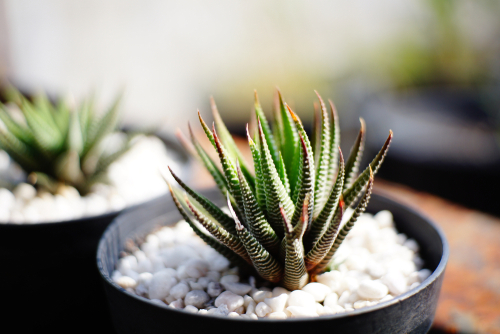
Brown leaf tips are a common problem for zebra succulents, and can be caused by a variety of factors. One possible cause is sun stress, which occurs when the plant is exposed to too much direct sunlight. Another possible cause is underwatering, which can lead to dry, brown leaf tips.
3. Mushy Brown Leaves
If the leaves of your zebra succulent are turning brown and feel mushy to the touch, it could be a sign of root rot. This is often caused by overwatering or poor drainage, which can lead to waterlogged soil and root damage.
4. Crispy Leaves
Crispy leaves are another common problem for zebra succulents, and can be caused by a variety of factors. One possible cause is underwatering, which can cause the leaves to dry out and become crispy. Another possible cause is overfertilization, which can lead to burned leaves.
5. Drooping
If your zebra succulent is drooping, it could be a sign of underwatering or overwatering. Check the soil moisture level and adjust your watering schedule accordingly.
6. Leaf Burn
Leaf burn occurs when the leaves of your zebra succulent are exposed to too much direct sunlight. This can cause the leaves to turn brown and dry out, and can also lead to sunburn damage.
7. Green Leaves Turning Brown
If the green leaves of your zebra succulent are turning brown, it could be a sign of a nutrient deficiency. Check the soil pH level and make sure your plant is getting enough nutrients.
Zebra Succulent Turning Brown – 5 Common Problems
Zebra succulents are hardy plants that require minimal care, but they can still develop brown leaves for various reasons. Here are some of the possible causes of a Zebra succulent turning brown.
1. Over-Watering
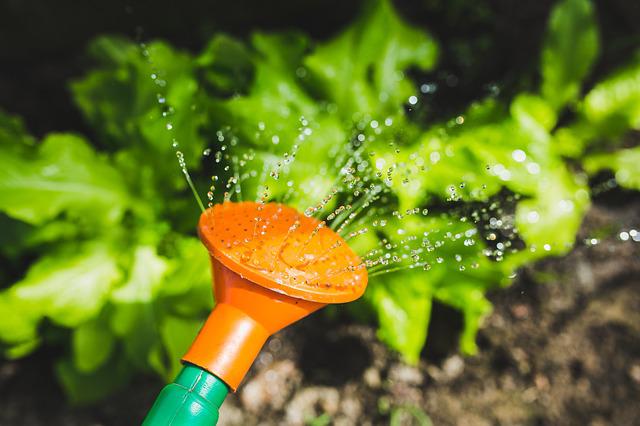
Over-watering is one of the most common causes of brown leaves in Zebra succulents. When the plant receives too much water, the roots can become waterlogged and start to rot, which can lead to brown leaves. Signs of over-watering include mushy leaves, soft and brown roots, and a foul odor.
2. Under-Watering
Under-watering can also cause brown leaves in Zebra succulents. When the plant doesn’t receive enough water, it will start to conserve water by shedding leaves, which can turn brown. Signs of under-watering include dry soil, shriveled leaves, and a general lack of growth.
3. Sun Stress
Sun stress can cause brown tips on Zebra succulent leaves. This occurs when the plant is exposed to too much direct sunlight or when the temperature is too intense. Signs of sun stress include brown tips on the leaves, wilting, and a general lack of growth.
4. Disease
Diseases such as root rot and fungal infections can also cause brown leaves in Zebra succulents. These diseases are often caused by over-watering or poor drainage. Signs of disease include brown or black spots on the leaves, a foul odor, and soft, mushy leaves.
5. Aging Process
Finally, the aging process can also cause brown leaves in Zebra succulents. As the plant ages, the lower leaves will naturally start to die and turn brown. This is a normal part of the plant’s life cycle and is nothing to worry about.
Role of Environmental Factors
Environmental factors play a crucial role in the health and appearance of a zebra succulent. In this section, we will discuss the impact of various environmental factors on the plant’s health.
1. Sunlight
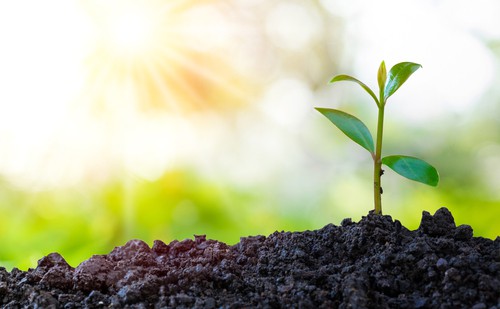
Zebra succulents require bright, indirect sunlight to thrive. Direct sunlight can cause the leaves to turn brown and dry out. On the other hand, too little sunlight can cause the leaves to stretch out and become leggy. It is recommended to place the zebra succulent in a location where it can receive filtered light or partial shade.
2. Shade
While zebra succulents require bright, indirect sunlight, they can also tolerate some shade. However, too much shade can cause the plant to stretch out and become leggy. It is important to find a balance between sunlight and shade to ensure the plant’s health.
3. Indirect Light
Zebra succulents prefer indirect light, as direct sunlight can cause sunburn and brown spots on the leaves. It is recommended to place the plant near a window that receives filtered light or to use a sheer curtain to diffuse the light.
4. Humidity
Zebra succulents prefer low humidity levels and can thrive in dry environments. High humidity levels can cause the leaves to rot and the plant to become susceptible to fungal infections. It is important to ensure proper air circulation to prevent excess moisture buildup around the plant.
5. Airflow
Good air circulation is essential for the health of a zebra succulent. Stagnant air can cause excess moisture buildup around the plant, which can lead to fungal infections and rot. It is recommended to place the plant in an area with good air circulation, such as near an open window or a fan.
Importance of Proper Soil and Watering
Zebra succulents are known for their unique and striking appearance, but they can turn brown if they are not properly cared for. One of the most important factors for keeping a zebra succulent healthy is the soil and watering.
1. Soil
The type of soil used for a zebra succulent is critical to its health. Zebra succulents require well-draining soil that is gritty and allows water to flow through it easily. Hydrophobic soil, which repels water, should be avoided. Organic matter should also be kept to a minimum, as it can retain too much moisture and lead to root rot.
Cactus and succulent soil or a potting mix that has been amended with sand or perlite is recommended for a zebra succulent. This type of soil will allow for proper drainage and prevent the soil from becoming waterlogged.
2. Water
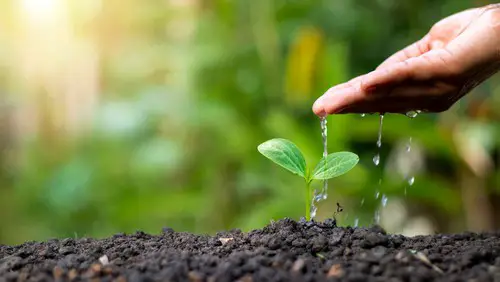
Watering a zebra succulent can be tricky, as overwatering can lead to root rot and underwatering can cause the leaves to turn brown. Zebra succulents store water in their leaves, so they do not need to be watered as often as other plants.
The soil should be allowed to dry out completely before watering a zebra succulent. This can take anywhere from one to two weeks, depending on the climate and humidity levels. When watering, it is important to water the soil directly and avoid getting water on the leaves, as this can lead to rot.
3. Drainage
Proper drainage is crucial for a zebra succulent’s health. Without good drainage, the soil can become waterlogged and lead to root rot. It is important to use a pot with drainage holes and avoid using saucers or trays underneath the pot that can prevent water from draining around the roots.
4. Watering
When watering a zebra succulent, it is important to water deeply and infrequently. This will allow the soil to dry out completely between waterings and prevent overwatering. A good rule of thumb is to water the soil until it is completely saturated and then allow it to dry out completely before watering again.
Potting and Repotting Considerations
1. Container
Choosing the right container is crucial to the health of a zebra succulent. The container should be the appropriate size for the plant, with enough room for growth. A container that is too large can hold too much moisture and lead to root rot, while a container that is too small can cause the roots to become cramped and stunted.
2. Drainage Holes
Drainage holes are essential for a zebra succulent to thrive. Without proper drainage, excess water can accumulate in the soil and cause the roots to rot. When selecting a container, make sure it has drainage holes in the bottom.
If the container does not have drainage holes, it is recommended to drill holes in the bottom or choose a different container.
3. Repot
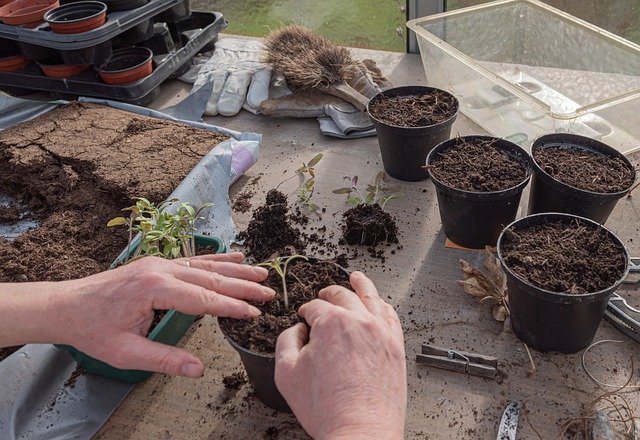
Repotting a zebra succulent is necessary when the plant outgrows its current container or when the soil becomes depleted of nutrients. It is recommended to repot the plant every 1-2 years, preferably in the spring or summer when the plant is actively growing.
When repotting, gently remove the plant from its current container and remove any dead or damaged roots.
4. Saucer
When watering a zebra succulent, it is important to use a saucer or tray to catch any excess water. However, it is important to empty the saucer or tray after watering to prevent the plant from sitting in standing water, which can lead to root rot.
Dealing with Pests and Diseases
1. Pests
Zebra succulents are generally resistant to pests, but they can still fall victim to infestations. Common pests that can affect zebra succulents include mealybugs, spider mites, and scale insects. These pests can cause damage to the leaves and stems of the plant, and can even lead to death if left untreated.
To deal with mealybugs, wipe the leaves of the plant with a damp cloth or cotton swab dipped in rubbing alcohol. For spider mites, spray the plant with a mixture of water and dish soap, or use a commercial insecticidal soap. Scale insects can be removed by scraping them off with a toothbrush or cotton swab dipped in rubbing alcohol.
Prevention is the best way to deal with pest infestations. Keep your zebra succulent healthy by providing it with the right amount of water and sunlight, and avoid over-fertilizing. Regularly inspect the plant for signs of pest infestation, and take action immediately if any are found.
2. Diseases
Zebra succulents can be susceptible to a few diseases, including soft rot and root rot. Soft rot is caused by bacterial infection and can cause the leaves to turn brown and mushy. Root rot is caused by overwatering and can cause the roots to rot, leading to wilting and death.
To deal with soft rot, remove the affected leaves and discard them in the trash. Avoid getting water on the leaves or stem of the plant, as this can spread the bacteria. For root rot, remove the plant from its pot and inspect the roots. Cut away any soft or mushy roots, and replant the succulent in fresh, well-draining soil.
Prevention is key to avoiding disease in zebra succulents. Make sure the plant is not overwatered and is planted in well-draining soil. Avoid getting water on the leaves or stem of the plant, as this can create a moist environment for bacteria to thrive.
3. Mites
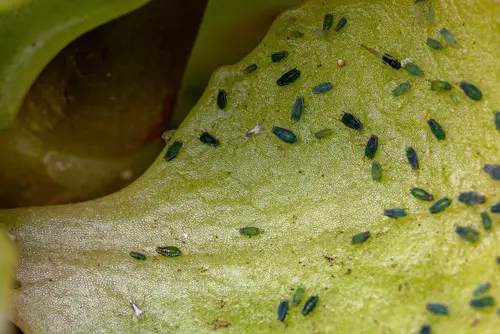
Spider mites are a common pest that can affect zebra succulents, but they can also be considered a type of mite. These tiny pests can cause damage to the leaves of the plant, leading to discoloration and even death if left untreated.
To deal with spider mites, spray the plant with a mixture of water and dish soap, or use a commercial insecticidal soap. You can also use a natural predator like ladybugs to control the infestation.
Prevention is key to avoiding mite infestations in zebra succulents. Keep the plant healthy by providing it with the right amount of water and sunlight, and avoid over-fertilizing. Regularly inspect the plant for signs of pest infestation, and take action immediately if any are found.
Seasonal Care
Zebra succulents are hardy plants that can survive in different climates. However, they still require specific care depending on the season. Here are some tips for taking care of your zebra succulent during the summer and winter months.
Summer
During the summer, zebra succulents require more water than usual. The hot weather can cause the soil to dry out quickly, so it’s essential to water your plant more frequently. However, make sure not to overwater your zebra succulent, as this can cause root rot.
To prevent your zebra succulent from drying out, you can add a layer of mulch around the base of the plant. Mulch helps to retain moisture in the soil and also helps to regulate soil temperature.
If you live in a hot, arid climate, you can also provide some shade for your zebra succulent. Direct sunlight can cause the leaves to turn brown and dry out. You can use a shade cloth or place your plant in a shaded area to protect it from the sun.
Winter
During the winter, zebra succulents enter a dormant phase. This means that they require less water than usual. Overwatering during this time can cause the leaves to turn brown and mushy.
To ensure that your zebra succulent survives the winter, reduce the frequency of watering. Only water your plant when the soil is completely dry. You can also move your plant to a warmer area to protect it from the cold.
In addition to reducing watering, you can also reduce fertilization during the winter. Zebra succulents do not require as much fertilizer during the dormant phase, so it’s best to reduce the frequency of fertilization.
By following these seasonal care tips, you can ensure that your zebra succulent remains healthy and vibrant throughout the year.
Conclusion
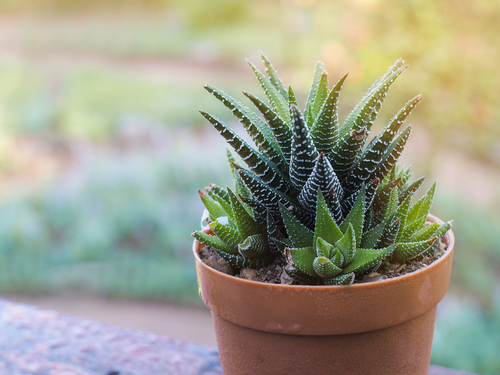
The Zebra Succulent can turn brown due to various reasons, both natural and unnatural. It is essential to identify the cause of the problem before taking any action to revive the plant.
Overwatering and leaf burn are common causes of brown leaves in Zebra Succulents. Slow-draining soils, pots without good drainage, and trays underneath pots preventing water from draining around the roots can also cause brown leaves.
If the brown leaves are due to overwatering, it is essential to reduce watering frequency and allow the soil to dry out before watering again. It is also crucial to ensure that the pot has good drainage and that the soil is well-draining. If the brown leaves are due to leaf burn, it is essential to move the plant to a location with less direct sunlight.
Moreover, it is essential to note that some brown leaves in Zebra Succulents are natural and no cause for concern. As long as the plant is healthy and growing, a few brown leaves do not indicate a severe problem.
However, if the brown leaves are widespread and the plant is not growing, it may be a sign of a more severe issue that requires further investigation.
Frequently Asked Questions
How do you save a dying zebra succulent?
Saving a dying zebra succulent requires identifying the cause of the problem and providing appropriate care. Overwatering is a common cause of zebra succulent death, and it can be remedied by allowing the soil to dry out completely before watering again.
If the plant is in a pot without drainage holes, it should be repotted into a container with proper drainage. Additionally, providing adequate sunlight and avoiding extreme temperatures can also help revive a dying zebra succulent.
How do you fix brown leaves on zebra plants?
Brown leaves on zebra plants can be caused by a variety of factors, including overwatering, sunburn, or natural aging. To fix brown leaves, it is important to identify the underlying cause.
If the cause is overwatering, the plant should be allowed to dry out completely before watering again. If the cause is sunburn, the plant should be moved to a location with less direct sunlight.
If the cause is natural aging, the brown leaves can be removed by gently pulling them off at the base of the stem.
What does an overwatered zebra succulent look like?
An overwatered zebra succulent may have leaves that turn brown or yellow with a soft and mushy texture. The plant may also appear wilted and may have roots that are rotting or discolored.
To prevent overwatering, it is important to ensure that the soil is completely dry before watering again and to use a well-draining soil mix.
Why are my zebra cactus leaves turning brown?
Zebra cactus leaves can turn brown for a variety of reasons, including overwatering, sunburn, or natural aging. To prevent brown leaves, it is important to provide adequate sunlight and to avoid overwatering.
If the plant is in a pot without drainage holes, it should be repotted into a container with proper drainage.
How to prevent zebra succulent from turning brown?
To prevent a zebra succulent from turning brown, it is important to provide adequate sunlight, avoid overwatering, and use a well-draining soil mix.
The plant should also be protected from extreme temperatures and should be repotted into a container with proper drainage if it is in a pot without drainage holes.
How to revive a zebra haworthia plant?
To revive a zebra haworthia plant, it is important to identify the underlying cause of the problem. Common causes of plant death include overwatering, sunburn, and pest infestations.
Once the cause has been identified, appropriate care should be provided, such as allowing the soil to dry out completely before watering again, moving the plant to a location with less direct sunlight, or treating the plant for pests.

Hey, I’m Lisa and I’ve been an avid gardener for over 30 years. I love writing, talking and living in the garden! Feel free to connect with me on my socials below

